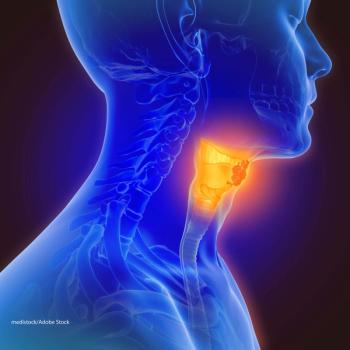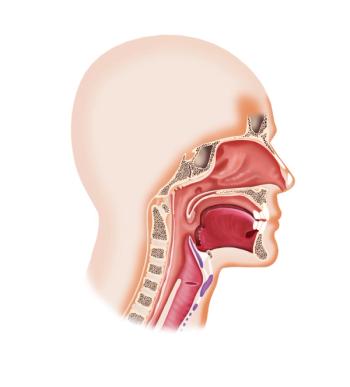
Spit-Based Test Could Predict Oral Cancer Recurrence
A new study found that in patients treated for oropharyngeal cancer, the detection of HPV16 DNA via an oral rinse could be a sign of poor prognosis.
The persistent presence of human papillomavirus (HPV) DNA in the post-treatment oral rinses of oropharyngeal cancer patients is associated with poor prognosis, according to a study
The majority of oropharyngeal cancer cases in the United States arise as a result of HPV infection, and while those HPV-positive tumors generally have a better prognosis, as many as 25% of patients still relapse following initial therapy.
The HPV DNA biomarker used in this study could be a promising way to non-invasively track HPV-positive oropharyngeal squamous cell carcinoma tumors and maximize the number of patients receiving therapy in a timely manner.
Gypsyamber D’Souza, PhD, of the department of epidemiology at the Johns Hopkins Bloomberg School of Public Health in Baltimore, and colleagues analyzed a prospective cohort of 124 patients diagnosed with HPV-related oropharyngeal cancer between 2009 and 2013 at four cancer centers. Patients had oral rinse samples collected at diagnosis and at least one sample collected at 9, 12, 18, or 24 months post-diagnosis. Ninety-one percent of participants had an oral rinse sample taken at 9 and 12 months.
A total of 54% of patients had HPV16 DNA detected at diagnosis, but detection was rare post-diagnosis. Only 5% (6 of 124) of patients had detectable HPV16 DNA at any time post-diagnosis.
Four HPV16-positive patients post-diagnosis had persistent, detectable DNA at each time point. One patient had detection at diagnosis, no detection between 9 and 12 months, but then detection between 18 and 24 months. The last patient had no detectable HPV16 DNA at diagnosis, detection at 12 months, followed by no detection at 18 to 24 months.
Persistent HPV16 DNA was linked with a worse disease free-survival with a hazard ratio (HR) of 29.7, and worse overall survival, (HR, 23.5). The five patients with persistent HPV16 DNA had recurrence of their disease, three with local disease, while 8% (9 of 119) of those without persistent HPV16 DNA developed recurrence.
The median time from earliest post-treatment HPV16 DNA detection to recurrence was 7 months (3.7 to 10.9 months).
The current study needs follow-up and is limited, stated the authors, by the infrequency of persistent oral HPV16 DNA detection as well as the small number of patients with disease recurrence.
In a commentary on the study, Julie E. Bauman, MD, MPH, and Robert L. Ferris, MD, of the University of Pittsburgh, noted that “the high negative predictive value of oral rinse HPV16 DNA detection raises the promise of deintensifying surveillance visits and/or costly imaging, particularly if on a prospective trial.” Yet, the question that still needs to be addressed, they noted, is whether the oral rinse as a surveillance tool can identify subclinical local or regional recurrence in a timely manner to allow for surgical salvage?
Newsletter
Stay up to date on recent advances in the multidisciplinary approach to cancer.





